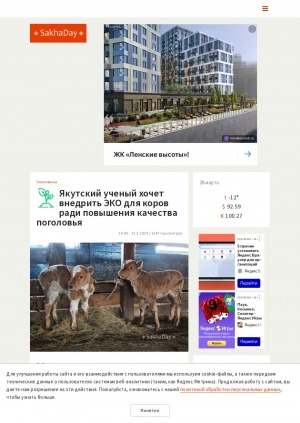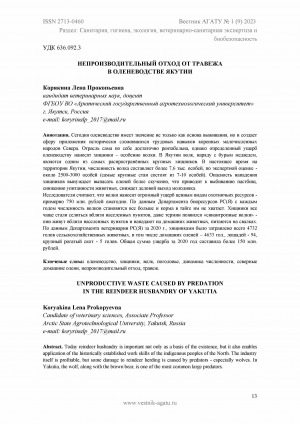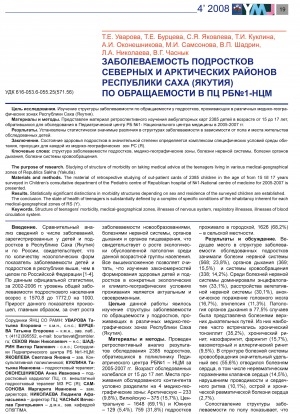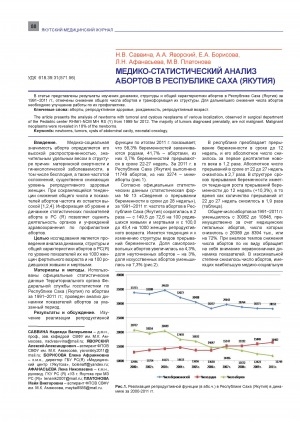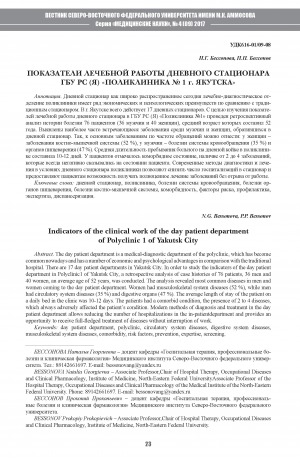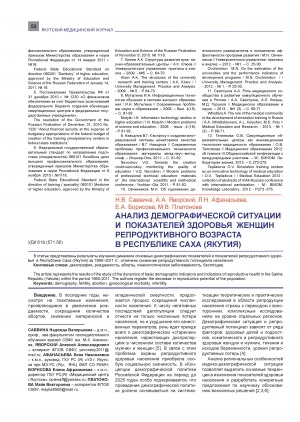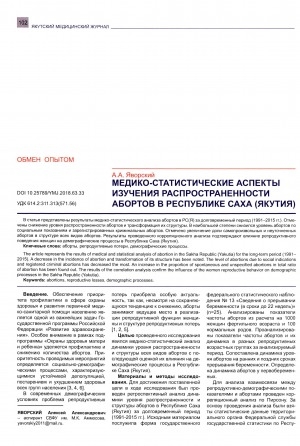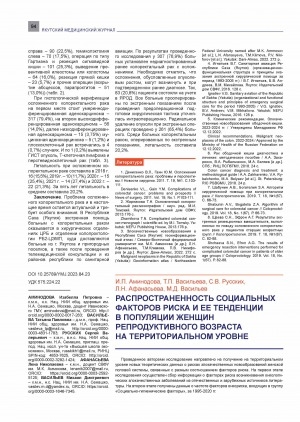Намский район (площадь 11,9 тыс. км²) расположен в Центральной Якутии, где развито животноводство. По данным Управления ветеринарии в 2022 г. поголовье с-х животных составило всего 28486 гол., в том числе крупный рогатый скот - 13177 гол., лошади - 14900 гол., свиньи - 409 гол. При этом было зарегистрировано непроизводительного отхода от незаразных болезней и прочих причин всего 434 гол., в том числе среди крупного рогатого скота - 265 гол., лошадей - 49 гол., свиней - 115 гол., мелкого рогатого скота - 5 гол. Самые высокие показатели непроизводительного отхода отмечаются среди крупного рогатого скота: от несчастного случая - 130 гол. (49,06%), утонуло - 40 гол. (15,09%), травеж - 18 гол. (6,79%), потеряно - 56 гол. (21,13%). Одной из основных причин, сдерживающих воспроизводство продуктивного скота, является патология репродуктивной системы (аборты, яловость, задержание последа).
Namsky district (an area of 11.9 thousand km2) is located in Central Yakutia, where animal husbandry is developed. According to the Veterinary Department in 2022, the number of agricultural animals was 28,486, including cattle - 13,177, horses - 14,900, pigs - 409. At the same time, a total of 434 heads, including 265 heads of cattle, 49 heads of horses, 115 heads of pigs and 5 heads of small cattle, were recorded as non-productive waste from non-communicable diseases and other causes. The highest rates of unproductive waste are noted among cattle: from an accident - 130 heads (49.06%), drowned - 40 heads (15.09%), predation - 18 heads (6.79%), lost - 56 heads (21.13%). One of the main reasons for limiting the reproduction of cattle is the pathology of the reproductive system (abortions, infertility, and detention of the placenta).


